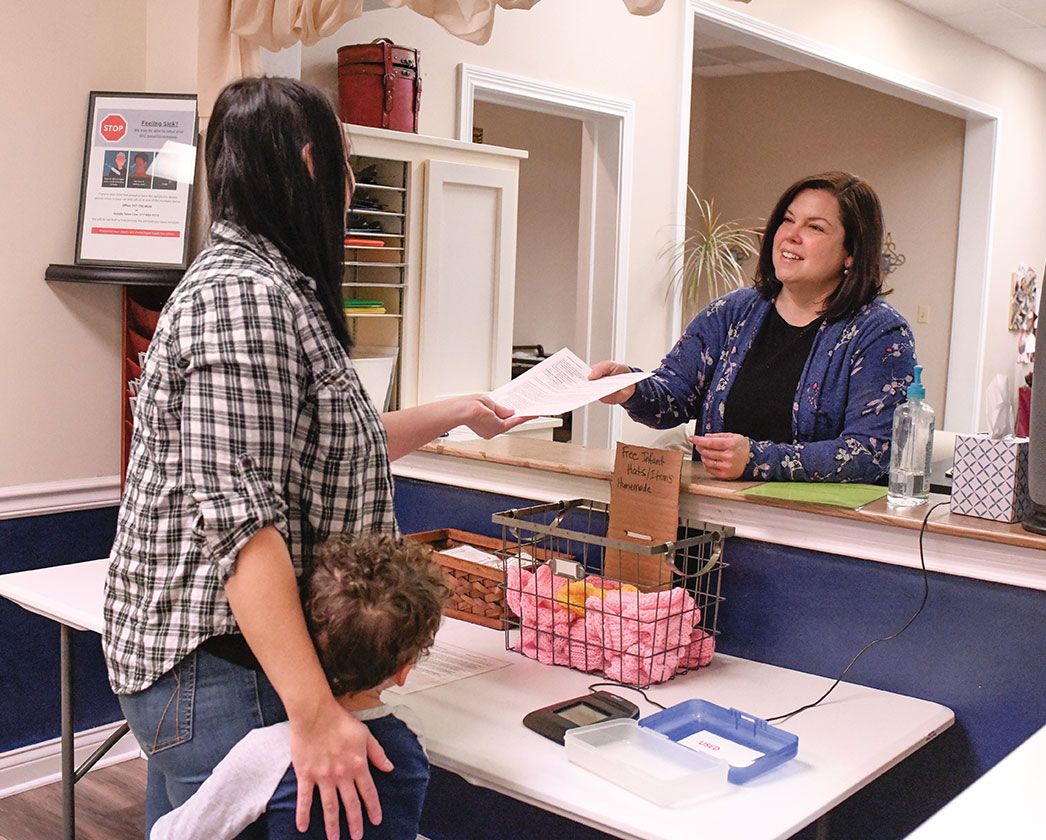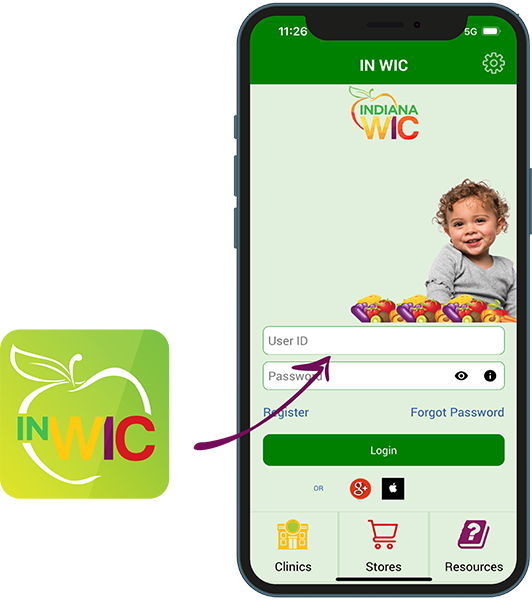h2 hide
Kisa WIC ye?
WIC se yon pwogram nitrisyon k ap ede moun ansentyo ak moun ki fin akouche yo, tibebe yo, ak timoun yo manje byen epi rete an sante.
Kiyès ki elijib?
- Fanm ansent yo
- Paran ki fin akouche (rive jiska sis mwa apre akouchman an);
- Paran k ap fè alètman (rive jiska yon lane apre akouchman an);
- Nourison yo (bebe ki gen mwens ke yon lane)
- Timoun ki gen mwens ke senk lane
Ou dwe ap viv nan Indiana epi satisfè kritè revni, ke w ap jwenn nan do bwochi sa oswa sou wic.in.gov.

Kisa WIC bay?
- Manje ekilibre ki fèt pou reponn ak bezwen nitrisyonèl patikilye yo ki gen ladann pwodwi ki fre nan sezon an pou w achte nan men agrikiltè lokal yo.
- Depistaj ak evalyasyon nitrisyon ak sante;
- Edikasyon ak konsèy nan sa ki konsène nitrisyon;
- Èd pou fè alètman, ki gen ladann paran k ap fè alètman yo benefisye manje ki nitritif nan kad pwogram WIC la, sipò fas-a-a-fas nan men Konseye yo, epi aksè a pwofesyonèl nan zafè laktasyon;
- Oryantasyon nan lòt sèvis sante, familyal ak sosyal Indiana.
Kòman WIC fonksyone?
Kontakte klinik WIC ki nan kominote ou an pou yon vizit gratis pou w ka enskri epi benefisye avantaj yo. Ou ka jwenn enfòmasyon sou klinik la sou wic.in.gov anba kliyan WIC yo.. Nan premye randevou w la, fanmi w ap kalifye pou tout sèvis itil WIC pwopoze yo.
Ou ka itilize avantaj WIC yo nan magazen WIC Indiana ki apwouve yo pou w achte:
- Lè ak pwodwi ki gen lèt
- Fwi ak legim
- Ze
- Sereyal
- Sereyal konplè (pen, diri, tòtiyas)
- Tofou
- Manje ti bebe
- Lèt nan bwat pou tibebe
Poukisa pou w itilize aplikasyon INWIC la?


Income eligibility
Families already receiving Medicaid, SNAP, or TANF are income eligible for the WIC program.
Household* size
Annual income, up to $ (total before deductions)
1
2
3
4
5
6
7
8
Monthly income, up to $ (total before deductions)
1
2
3
4
5
6
7
8
Weekly income, up to $ (total before deductions)
1
2
3
4
5
6
7
8
If you are pregnant, you may count yourself as two (2).
For households with more than 8 members, add $8,732 annual income for each additional member.
*Household means a group of people (related or not) who are living as one economic unit.
Kalifikasyon nan revni
Fanmi ki deja ap benefisye Medicaid, SNAP oswa TANF yo kalifye pou pwogram WIC la.
| Gwosè fwaye* a | Revni pa ane, jiska $ (total avan dediksyon yo) |
Revni pa mwa, jiska $ (total avan dediksyon yo) |
Revni pa semèn, jiska $ (total avan dediksyon yo) |
|---|---|---|---|
| 1 | $27,861 | $2,322 | $536 |
| 2 | $37,814 | $3,152 | $728 |
| 3 | $47,767 | $3,981 | $919 |
| 4 | $57,720 | $4,810 | $1,110 |
| 5 | $67,673 | $5,640 | $1,302 |
| 6 | $77,626 | $6,469 | $1,493 |
| 7 | $87,579 | $7,299 | $1,685 |
| 8 | $97,532 | $8,128 | $1,876 |
Si ou ansent, ou kapab konte tèt ou tankou de (2) moun.
Pou fwaye ki gen plis pase 8 moun, ajoute $9,953 salè anyèl pou chak moun anplis.
*Fwaye vle di yon gwoup moun (ki menm fanmi oswa ki pa menm fanmi) k ap viv tankou yon sèl inite ekonomik.
Pou w jwenn plis enfòmasyon oswa pou w jwenn klinik ki toupre w, voye yon imèl nan inwic@health.in.gov, rele nan 800-522-0874, oswa ale sou sitwèb nou an ki se wic.in.gov.